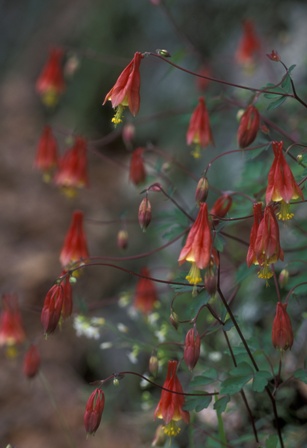 There are many reasons you should include native plants into your landscape plans. For one, most native plants require little maintenance because they have evolved to thrive in our local habitats and growing conditions.
There are many reasons you should include native plants into your landscape plans. For one, most native plants require little maintenance because they have evolved to thrive in our local habitats and growing conditions.
That means after the first year of making sure they are well watered and have put out roots, very little watering and care is needed. Perhaps the most compelling reason is that not only do native plants look good, they also do good for wildlife.
Five Native Plants To Consider
So what native plants should you consider if you live in Massachusetts? Here are five of our spring and summer perennial favorites that will come back year after year.
Butterfly Weed (Asclepias tuberosa)
Similar to its cousin, the dusty pink-flowered common milkweed (Asclepias syriaca), butterfly weed is a host plant for monarch butterfly caterpillars. A host plant is a specific plant that a species of caterpillar will eat. Butterfly weed requires full sun and can grow as tall as one to two feet, with orange or yellow flowers that bloom in summer.
Joe-Pye Weed (Eutrochium maculatum)
Don’t let the “weed” in joe-pye weed fool you. The term in this case refers to the fact that it’s commonly found, not that it’s unwanted. The dusty pink late-blooming flower attracts pollinators and clouds of butterflies in the late summer. The Gateway variety will grow to six or seven feet tall, where as Little Joe reaches only three to four feet.
Foam Flower (Tiarella cordifolia)
Attracting small bees and butterflies, this little bottle-brush of a white flower is held above a nicely toothed leaf. There are many new varieties of foam flower that have interesting red markings on the leaves. It can spread and become a beautiful spring flowering ground cover.
Columbine (Aquilegia canadensis)
The native columbine has an orange-red flower with a yellow center and is attractive to pollinators and hummingbirds. After blooming, the delicate blue-green foliage continues to look beautiful all summer long. And while there are many attractive species of columbines, the only one native to Massachusetts is the Aquilegia canadensis.
Maidenhair Fern (Adiantum penduatum)
This native is one of the most delicate-looking ferns. Its thin black stems and bright green foliage add a light frothy texture to a shady garden.
Many local nurseries sell native plants. Before you purchase one, make sure they were cultivated from seed. We like the wild plants to stay wild!
Do you have a favorite native plant? If so, share in the comments!


